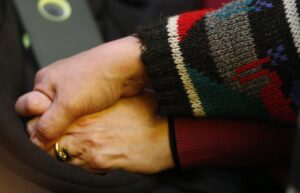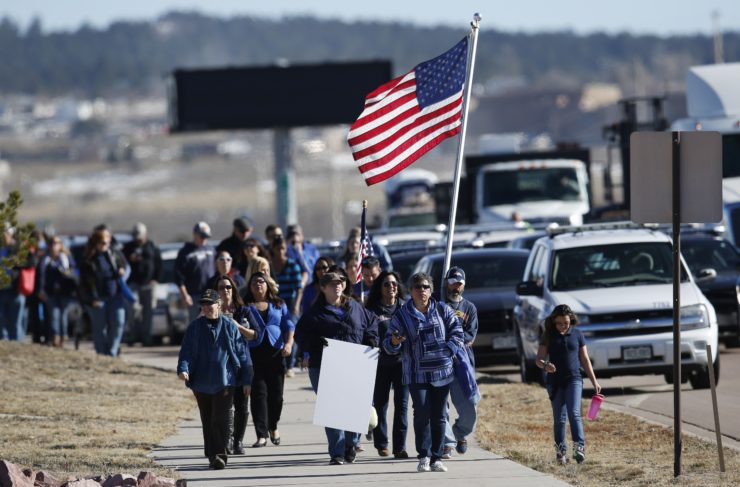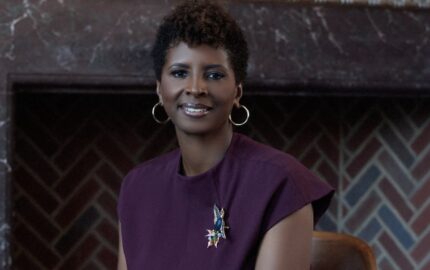When I saw that Robert Sanchez, a senior writer at Denver magazine 5280, had taken on Colorado Springs in his story for the publication’s April issue, I couldn’t wait to read it. Like Sanchez, I grew up in the South Denver suburbs, and my family would often visit the Springs’ scenic sites, including Pike’s Peak and Garden of the Gods. Still, my relationship to the community was an uneasy one.
I grew up hearing my parents bemoan the Springs and its hard-core brand of conservatism, sprawl and religiosity. To many of us in Denver, the city has always been something of an embarrassment, like a good-looking but backward-thinking younger brother with a penchant for doing and saying crazy things that bring ridicule to our respectable family name.
Few journalists would seem more up to the complex task of peeling back on the city than Sanchez. He has made much of his considerable mark on the magazine by profiling some of Colorado’s most extreme and quirky people. There was his 2008 story on Michael Karolchyk, the fast-talking East Coast transplant who built a fitness empire by mocking the morbidly obese. He more recently profiled Michelle Malkin, the conservative blog queen whose unapologetically blunt opinions (she once wrote a book defending WWII internment camps) have made her the bane of many in her own party.
But I wondered how one magazine story could possibly capture the soul of an entire community, especially one as ripe for caricature as Colorado Springs. Seeming to make the task even more difficult was the fact that that the city was reeling from two mass shootings that left its residents deeply shaken. In the second, a 57-year-old gunman charged into the city’s Planned Parenthood clinic and killed three people, including a police officer. That shooting briefly generated international headlines given the national debate about abortion before being eclipsed in the news by the San Bernardino shooting only five days later.
But as I read the piece and came to his line describing the city as having “happily operated as an otherworldly entity, a never-changing counterpoint to an ever-changing America,” I knew he was on his way to nailing it.
He spoke with me by phone from Denver about “Colorado Springs’ Identity Crisis.” The interview has been edited and condensed.
This story came out of last year’s shootings. But how did you figure out what the story really was here, and what did the process look like to go from that event to the final piece?
The impetus of the story was obviously the shooting. That was the open door into it. I’ve lived fairly close to Colorado Springs for much of my life. It’s a 45-minute drive from my house, and I live in the same town I grew up in. I had also done a previous mass shooting story. So I got together with my editor, [5280 Editorial Director and fellow Mizzou grad Geoff Van Dyke], and just kind of discussed that we thought it was important to do a story on the Springs, but I didn’t want to do it in a way that would necessarily be like all of the other stories that had already been done, in terms of just the religion stuff. Although obviously that stuff is a big part of what Colorado Springs is, whether the [people who live there] want to accept that or not.
I know a lot of people who really, really, really outline their stuff, but with me my outlines are pretty brief. It might just be a couple of points that I want to hit. I’ll just sit in my car a lot of times thinking about how everything goes together.
So then I went down to the Springs and it was just a lot of driving around and talking to some folks. There were some people I really wanted to get into the story in some way. John Morse, the former state legislator, is one of them. Some of the people I wanted to get in there are almost like “Colorado Springs famous,” like Dragon Man. He was a really nice guy and really great to interview. When I was talking to him, I felt like what you saw was what you got versus other times with people where you sometimes have your BS detector on and feel like you are getting a lot of BS when talking to people. He was very straight up about who he was and what he was trying to do and how he got there.
I had made contact [with Kurt Aichele], the preacher who led the church where the cop who had been killed was a pastor, and I figured that was a really good open way of getting into the story. Then it was just a matter of finding other folks -- taxi driver Octarvia Roberts, and the couple at the end of the story.
I just wanted to show that it is a really diverse area. There are straight people and gay people and Republicans and Democrats, and there are very overtly pro-gun people and preachers and all that, and they are all trying to figure out what Colorado Springs is, especially after these two shootings have put it back into the spotlight.
In reading this story, I was particularly struck by the opening and its epic, almost biblical feel. Is that something you were consciously going for with the opening?
Yeah, I just was looking for the grand opening to show this place, and I just felt like it was best to start with what you see when you are driving in. Most people are approaching it from north to south because most of the population in the state is there so most people are entering from the north. So it was the literal entering into the city: This is what you see and this is on the left and this is on the right. I was going for “Hey, there’s Pike’s Peak and the Air Force Academy and these churches and all of these other things.” It was a very conscious decision as a way to open up this greater story of what this city is and how certain people perceive it.
Were there any challenges particular to this piece as opposed to others you have worked on?
I think the challenge with something like this that’s a big place story is to capture that sense of place in an authentic way. Sometimes when people see it they are like, “That’s not that place,” and I didn’t want that. You have to spend a lot of time in that area. But that’s like any story. You don’t want to be in and out. That’s always a challenge, because I have a wife and kids and I want to be home, but at the same time I need to make sure I really nail this story down. I don’t think there were any special challenges. It was just a matter of going to people and talking to them and really sitting down with them and listening to what they had to say.
As a student who sometimes struggles with structure myself, I’m always struck when reading you and many of the great writers I admire by how you structure your often very complex pieces and come up with the order of how you are going to go in and out of all these different aspects covered and discussed within them. In particular, the opening and closing were so seamless. How did you think about and approach the structure of this story?

Some of it is by feel. I know a lot of people who really, really, really outline their stuff, but with me my outlines are pretty brief. It might just be a couple of points that I want to hit. I’ll just sit in my car a lot of times thinking about how everything goes together. What I’ll do a lot of times is say, “OK, I’ve got to have my opener, and basically what is that?” So I’ll come up with whatever character or scene and from there I’ll say, “OK, how do I get into it and then how do I get out of that section?” So, I’ll have that knocked down because I need to have my first section done before I can move on when I’m writing. But for outlining purposes, then it’s just, “What seems to flow organically from one section to the next and what are some of the high points that I need to hit?”
So with this story, I felt like I really needed to get into the religion stuff, because it is a story on Colorado Springs and obviously the gun violence that had been going on. Those are areas I really needed to attack in a way that might be a little different. I think my interview with John Morse was definitely different. So I was able to get that stuff, and then it’s just, “How does everything else fall into place after that?” I’ll put it together and I’ll write the thing and I’m really blessed to have such a great editor, because Geoff literally prints everything out and lays it on the table and just looks at it and he’ll say, “OK, this is what I’m thinking. What if you move this to here and this to here and this to here?” Things just kind of come together. He can see some of those things and it’s like, “OK, I need to round this out better and I need to come up with a better way to lead into this section.”
So that in some ways is a group effort with my editor and I. In other ways, it’s a solitary thing because I’m trying to think of what points I really need to make. It can take some time.
I follow you on Twitter and I saw you got some blowback on there. You also definitely seem to be getting some mixed feedback in the comments on the 5280 website. Are those types of responses something you think about? What do you think of that negative feedback?

Oh man, I think even the Colorado Springs mayor wrote a letter to the editor. He addressed the Planned Parenthood shooting because it was on Black Friday or something like that, but he doesn’t address the fact that some dude was walking down the street in downtown Colorado Springs just trying to blow people away. It is what it is. You do your story, you do the best that you can with the information you have, and you try to put together a good story.
The blowback I got is interesting because it’s kind of a concentrated group of people, mainly some local journalists down there and some politicians. I can imagine they would read that story and be like, “Oh, man, this guy is from Denver and he is bashing our community.” I didn’t even think of my story that way. I showed people who actually love living in Colorado Springs for myriad different reasons. But I also did point out that there are these issues.
People thought I had gone negative because I was focusing on the shooting issues, but that was the whole reason to get into the story. With that, I think maybe when I was younger that would have bothered me. But [now] some of it does but most of it doesn’t. It’s just kind of like “OK, that’s your opinion and you can have it, but you’re completely off on everything.” But it’s their community and the sad thing is those people would have preferred a Chamber of Commerce puff piece on their city rather than a really deep look into what makes it tick and what’s good and what needs to be fixed. I would write the same story today if I knew I would have gotten the feedback from those people. I really feel it was probably just a minority of people, but it’s a vocal minority. Believe me, I’ve been attacked and threatened in so many ways over my career. When I was at the AP in Little Rock, I think somebody threatened to kill me once, and I had to get an escort out to my car a couple times because we were worried someone might put a bomb under my car or something, so a few upset people in Colorado Springs doesn’t really bother me.
Paul Albani-Burgio is a native of Denver who recently graduated from the University of Missouri’s School of Journalism with a degree in magazine journalism. He is currently an editorial intern at 5280 magazine and is seeking a job in writing or editing.



